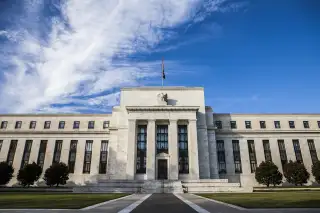Fed Stands Pat on Rates Despite Improving Markets

The Federal Reserve Open Market Committee left its target for short-term interest rates unchanged at 1/4 percent to 1/2 percent on Wednesday, noting that "labor market conditions have improved even as growth in economic activity appears to have slowed." Still, Fed chair Janet Yellen left the door open to more rate hikes this year, forecasting "gradual adjustments in the stance of monetary policy." A lot of fuss about nothing? Here's is what you need to know.
The move wasn't a surprise
Late last year the Federal Reserve made good on its promise to start hiking interest rates, with a quarter point move in December. It had originally projected as many as four rate hikes this year. The problem? Starting in January, the stock market plunged and so did oil prices. Add in sluggish fourth-quarter economic growth -- about 1.4%, compared to 2.4% for all of 2015 -- and the economic situation suddenly looked a lot more precarious than it had weeks before. While the Fed walked back its stance on rate hikes in March, markets were even more cautious going into this week's meeting. Futures markets priced in just one rate hike this year. Of nearly 50 money managers and economists surveyed by CNBC earlier this month, a grand total of zero predicted a rate hike on Wednesday.
The pendulum is swinging back...a bit
Sure, 2016 got off to a rough start. But in case you hadn't noticed, things have gotten a lot better in the past couple weeks. The stock market, at one point down nearly 15%, has shot back up and again is near record highs. Another indicator of global economic health, oil, which had been below $30 a barrel two months ago, is back up to $45. True, the Fed, tries to tune out volatile market news. But indicators of the real economy have also continued to improve apace. The U.S. added 200,000-plus jobs last month and, while jobless rate ticked up, that was actually good news too: a reflection of the fact that more and more people are looking work.
The Fed's trying to maintain flexibility
Despite the improving economy, most observers are still skeptical of a rate hike in June. That said there are signs that inflation, which rate hikes aim to head off, has picked up after years of sluggishness. The Personal Consumption Index, the Fed's preferred measure of prices, recently ticked above 1.2%. That's still well below the Fed's 2% target, but far higher than the 0.2% it was clocking a year ago. Will this persuade Fed chair Yellen? So far, she has acknowledged it, but also hedged a bit, telling an audience last month it was too early to tell if the uptick was "durable."
Wednesday's Fed statement offered few additional clues, noting that inflation could "rise to 2 percent over the medium term" as both energy prices and the labor market continue to improve. Of course, it's anyone's guess precisely what "the medium term" means. While the Fed's next chance to raise rates comes in June, observers still see that as something of a long shot. The most popular answer among the pros surveyed by CNBC is August.